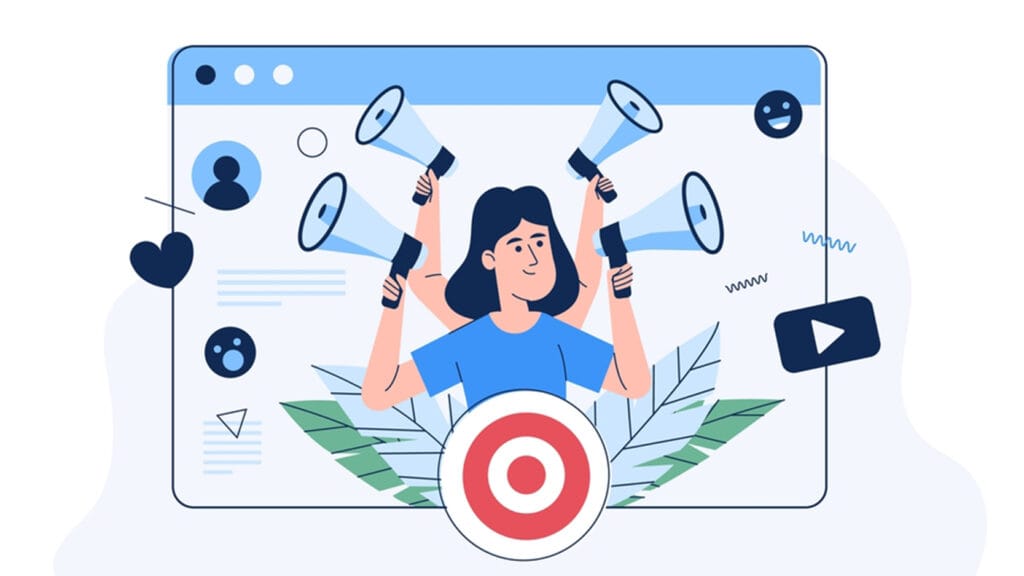
How to Create a Multi-Channel Marketing Strategy for Maximum Reach and ROI
Consumers are no longer restricted to a single platform or a channel. Instead, they navigate through different touch points such as social media, email, search engines, and even offline communication before making any purchase decision. For businesses aiming to reach people extensively and get an optimum ROI, a multi-channel marketing campaign is the need of the hour. But just being present on more than one channel is not enough. True expertise lies in piecing these channels together into a coherent and effective strategy, often provided by a digital marketing agency in Mumbai like The Virtual Salt, to bring reach and measurable returns. Here’s the deep dive into creating the most high-performing multi-channel marketing strategy- one that targets maximum ROI:
1. Start with Data-Driven Audience Insights
Multi-channel marketing should not be a scattergun approach. According to Hubspot, Business organizations that personalize their marketing based on segmented data see a whopping 760% rise in revenue compared to those who do not. It breaks down where your audience spends their time, how they interact with various channels, and what kind of content resonates. There are various tools available at our disposal that enable us to derive these granular insights. It is not just about identifying the platforms but understanding audience behavior across channels to refine targeting efforts.
2. Unified Messaging with Adaptive Content
Message consistency across channels is important, but also of equal importance is that it adapts. Consumers want contextually relevant content from brands aligned to the platform they are on. Hence, the importance of adaptive content is repurposed in the format to best suit each platform while ensuring core messaging and maximizing ROI.
As a result, you can also produce a 1-minute teaser video for Instagram, create a more in-depth explainer for YouTube, and a more developed blog post for your website. The more versatilities you layer without losing the crux of the message will keep your multi-channel strategy cohesive yet personalized.
If the process of managing complexity proves too overwhelming, a digital marketing agency can offer the experience to develop adaptive content. The Virtual Salt is one such agency that specializes in helping businesses tailor their content to each platform while making sure that the unified voice runs across all channels. We ensure that your multi-channel strategy stays aligned with your brand’s voice and that it maximizes your ROI (Return on Investment).
3. Channel Integration, Not Duplication
The most common mistake with business and multi-channel marketing is duplicating the same thing on multiple fronts. A good strategy would not be to copy but to integrate channels. That is to say, each channel should support other channels, enabling a silky smooth path for the consumer.
For instance, a prospect might discover your brand on Instagram, visit your website through a retargeting ad, and end the journey with a personalized email offer that converts him or her into a customer. According to research conducted by Aberdeen Group, companies with robust omnichannel strategies retain 89% of their customers compared to merely 33% by companies with poor integration.
Using UTM parameters in your links will help track the effectiveness of each channel and campaign, and allow you to tweak your strategy based on real performance data rather than assumptions.
4. Embrace Marketing Automation for Efficiency
With the help of various tools, you can automate workflows, making them smoother and ensuring that your message flows cohesively across all channels. A perfect multi-channel strategy often involves managing dozens of campaigns simultaneously, for instance, social media ads, alongside email newsletters. Without automation, there is a risk of misalignment and missed opportunities.
According to HubSpot, a business that automatizes the nurturing process of prospects is likely to encounter 451% qualified leads. With automation, you can set up triggers and workflows based on consumer behavior. For example, if a customer has abandoned his cart on your website, he will automatically receive a follow-up email and will also be retargeted via a special offer on Facebook. Automation improves engagement and not only drives measurable ROI but converts intent into action.
5. Leverage Cross-Channel Attribution Modeling
One of the biggest challenges in multi-channel marketing is proper channel-level attribution to ROI. Traditional “last-click” attribution models don’t capture that complexity, as the modern customer moves from one touch point to another on the way to their goal. Cross-channel attribution modeling fills this gap.
There are ample tools that can be used to assign proper weight to contributions in every channel for those conversions, which helps you avoid over-investment in one high-conversion channel, thereby optimizing the spending of all channels on their actual contribution to the conversion funnel.
6. Focus on Mobile-First Strategies
The mobile-first trend is no longer something to think about in the future it’s here and has taken over. As reported by MobiLoud, about 58.21% of all global traffic comes from mobile devices. Mobile first strategies involve more than just ensuring that your website is scaled down for smaller screens; every touchpoint, right from social media ads to email marketing, even application-based push notifications, must be optimized for mobile consumption. Mobile-friendly landing pages dramatically impact conversion rates as well. According to Think with Google, 53% of mobile users tend to abandon websites that take more than three seconds to load. Hence, your multi-channel campaign needs to center on fast, low-friction mobile experiences if you want to capture and convert that audience.
Digital marketing agencies like, The Virtual Salt can be a good partner for you to ensure that every aspect of your mobile strategy, be it responsive design or optimization of load speed, is following best practices. We at The Virtual Salt can help you by leveraging our expertise to build mobile-only campaigns and maximize engagement and conversions cross-channel.
7. Experiment with Emerging Channels for Maximum Reach
While the established platforms such as Google, Facebook, and Instagram are the lifelines, it is also a good idea to try some of the newer avenues with a more visionary approach. There are channels like TikTok, Reddit, or even podcasts that are growing across the boundaries of younger demographics. India, according to the PwC report, Global Entertainment & Media Outlook 2020–2024, already stands as the third-largest podcast market globally with 57.6 million listeners, after China and the US.
Being an early adopter of new platforms enables you to reach audiences before the competition saturates these channels, and, consequently, achieves lower CPC and higher engagement rates. It could be a very powerful way to boost reach and lift ROI without really bludgeoning ad spend.
8. Continuous Testing and Optimization
A static multichannel strategy is a losing one. Ongoing testing such as testing of email subject lines, split testing of landing pages, or ad creative adjustment based on performance, is key to fine-tuning your strategy for improved results. You will find ample tools that can easily be experimented with, across various marketing elements.
A great tip on this is to incrementally test, determining the true incremental value brought about by each channel or campaign for your overall strategy. This way, you’re not attributing success to things that would have happened anyway.
Conclusion
Creating a multi-channel marketing strategy for maximum reach and ROI requires more than just setting up campaigns across multiple platforms. It involves leveraging data-driven insights, creating adaptive content, integrating channels, utilizing automation, and constantly optimizing through advanced attribution and testing methods. By partnering with a digital marketing agency like The Virtual Salt, businesses can adopt this sophisticated, multi-faceted approach, allowing them to not only increase their visibility but also drive more conversions, improving their ROI and long-term growth.

